
There always seems to be changes this time of year – for the parks, the locals and the wildlife.
After another exciting and busy season, we have closed our historic sites on Mackinac Island and in and around Mackinaw City for the winter. The end of the season doesn’t mean things stop at the Mackinac State Historic Parks. We continue our mission by shifting our focus to new projects and the off-season work of preparing for the next year.
As the local human population levels drop for the upcoming winter, the resident wildlife undertake a variety of changes in order to survive the cold and snow that will soon arrive. Migration, hibernation and seasonal adaptations are important tools that wildlife use to help them get through the winter months.
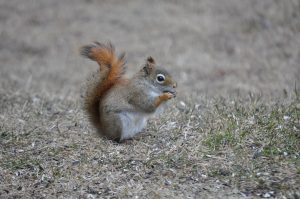
Many birds migrate south to warmer places where it is easier for them to find food. Local monarch butterflies migrate all the way to Mexico for the winter. Even a few mammals, like some bats, migrate long distances to escape the cold. The reason more animals don’t use this tool is that migration can be a very dangerous endeavor.
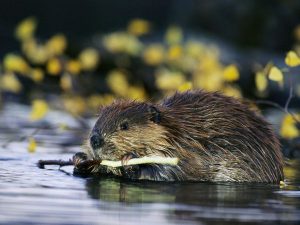
They must pass through unfamiliar territory, with its limited or unknown food sources, while at the same time avoiding predators and unpredictable weather. Many animals don’t survive migration.
Another option is to hibernate. Some mammals will get ready for winter by eating extra food and storing it as body fat. Then they find a place, often underground, to sleep the winter away. The true hibernators, like bats, chipmunks and woodchucks, have a tremendous drop in heart rate, breathing and body temperature during their very deep winter sleep. Mammals like bears, raccoons and skunks also lower their temperature, heart and breathing rates, but only slightly and enter a state of torpor. Unlike the true hibernators, these light sleepers can be easily awoken in the middle of winter. That is a good thing to remember if you come across a bear den during the next few months.
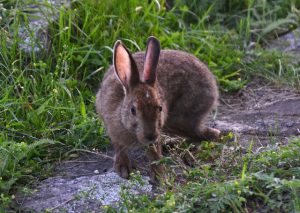
Animals that don’t avoid winter by migrating and or hibernating often change their appearance and behavior in order to survive. Snowshoe hare and short-tailed and long-tailed weasels change their fur color from brown to mostly white so that they blend into the winter landscape.
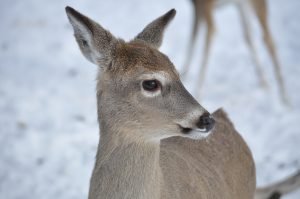
Many birds and mammals change their diets during the winter and eat things that they avoid eating during the summer. Deer eat lots of northern white cedar in the winter when they can no longer find their preferred fruits, grasses and forbs.
Ruffed grouse, one of the non-migrating birds of the northwoods eats a variety of berries, leaves, nuts, seeds, amphibians, insects and worms during the summer. Once winter sets in it eats mostly tree buds. This bird spends a lot of time on the forest floor, and in winter it grows numerous little pointed scales on the sides of its skinny toes. These scales effectively double the width of their toes, allowing the grouse to more easily walk across the snow. Come spring when snowshoes are no longer needed, these scales fall off.
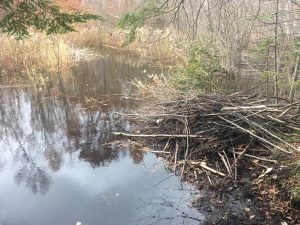
Some birds and mammals have spent a great deal of time this fall gathering and storing food to get them through the lean winter months. Beaver stockpile tree branches on the bottom of the pond close to their lodge, so they can swim under the ice and bring food back to their lodge without venturing out in the snow. Squirrels, mice and even blue jays stockpile and hide nuts and seeds, hoping to remember their secret locations later in the winter.
Think about how we prepare for and adapt to the winter season. We often use similar techniques to those used by the wildlife that share our communities. Whatever your strategy is, be sure to enjoy the season!









